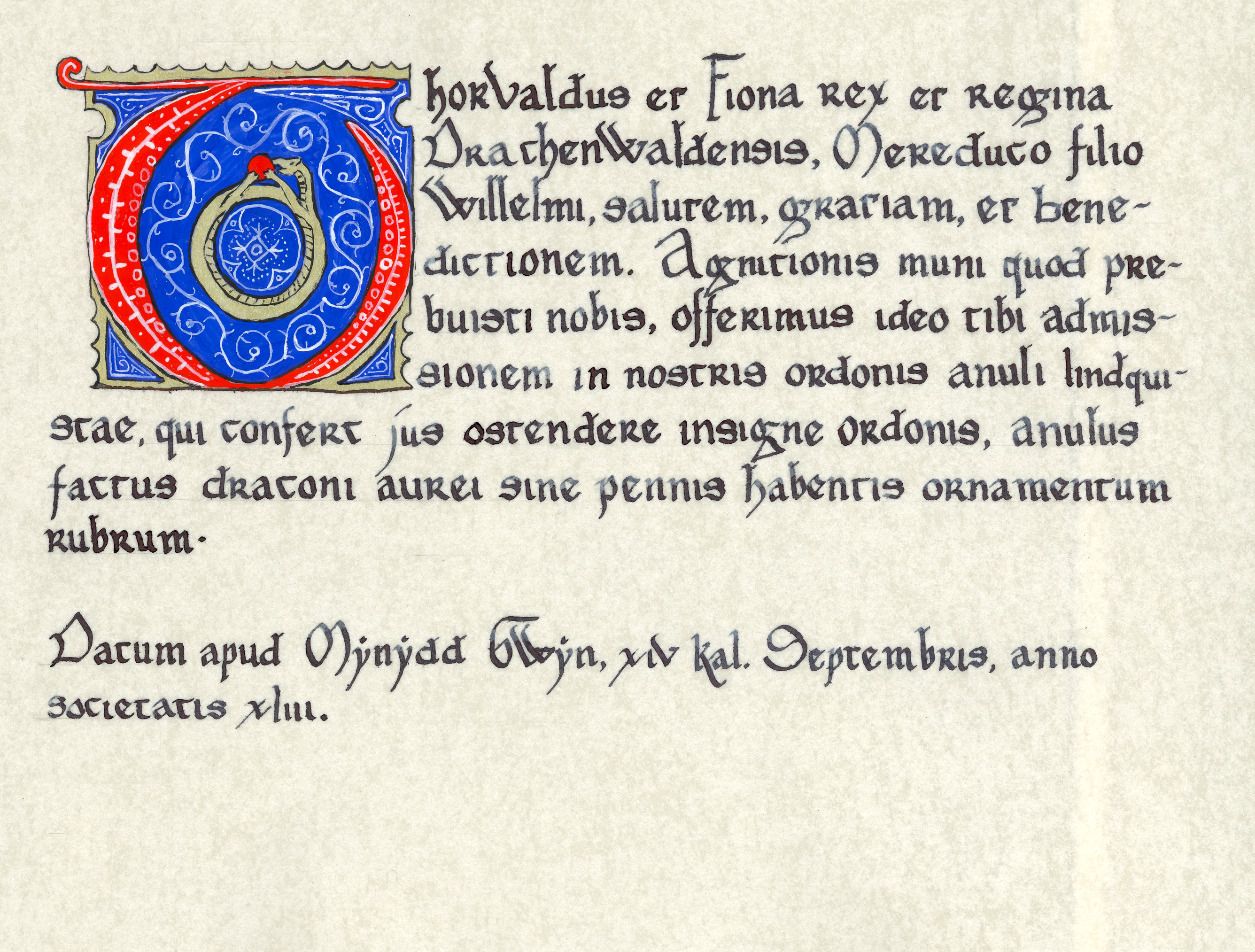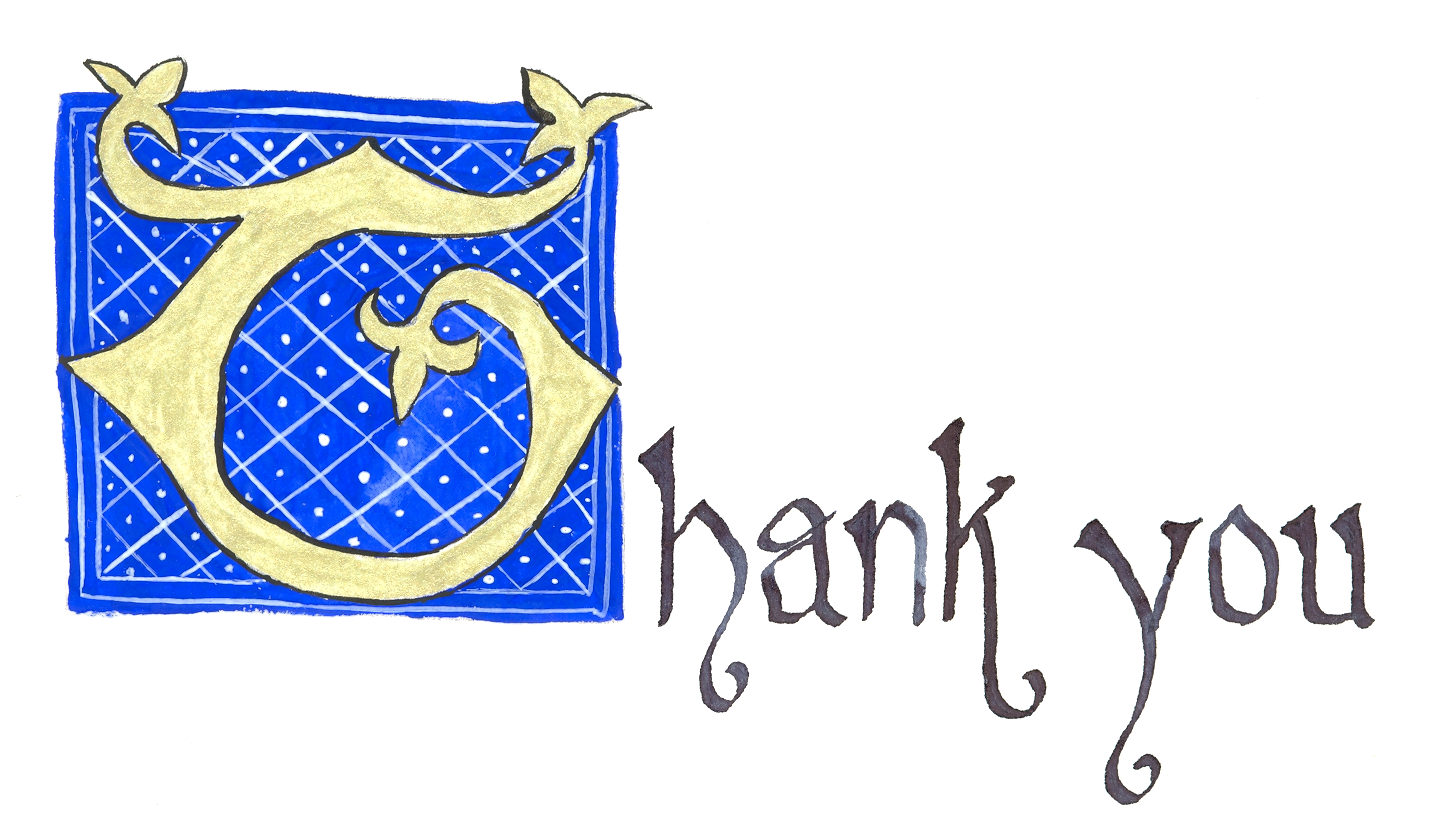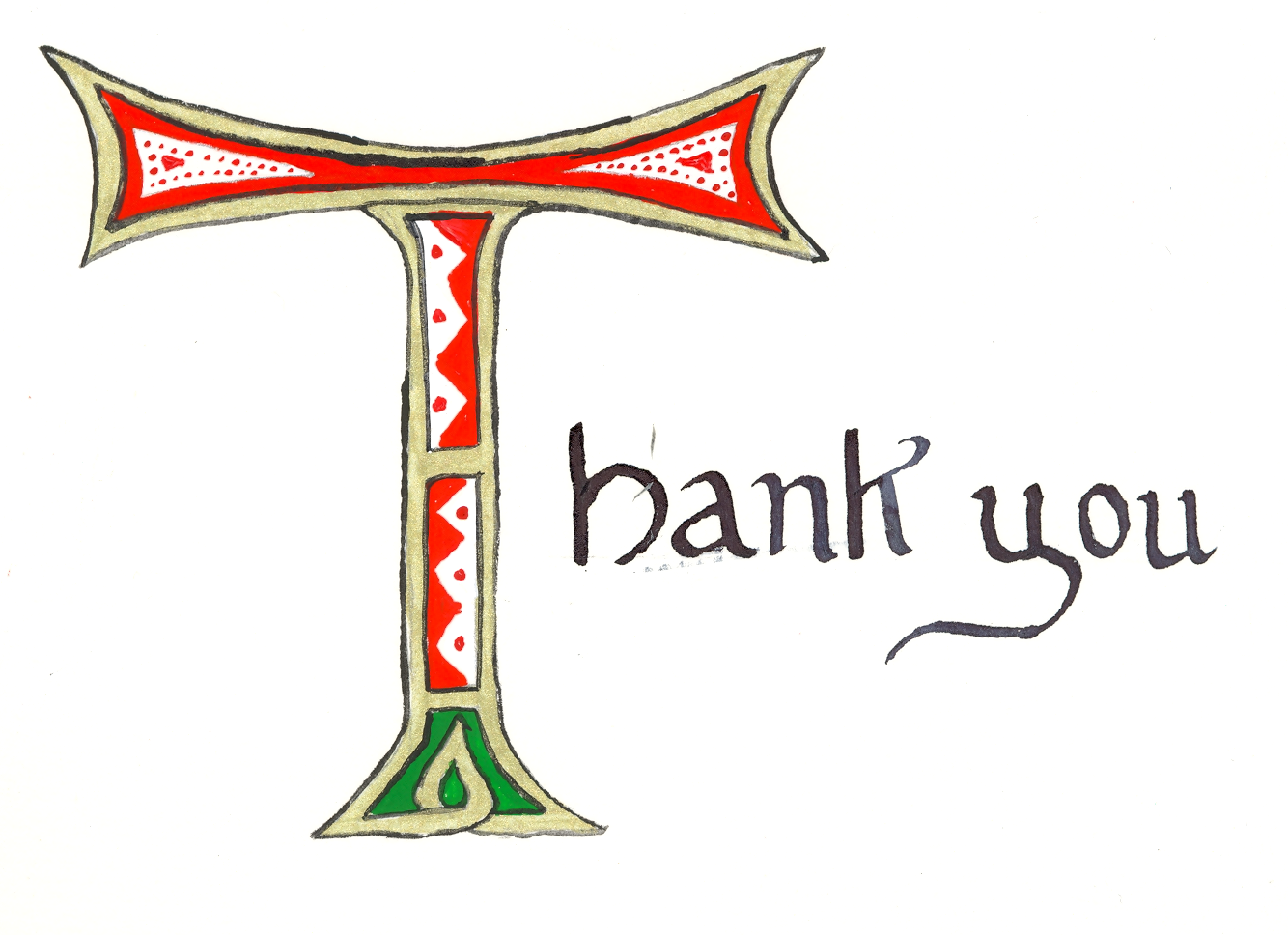End of August/beginning of September 2008

The text reads in translation Thorvald and Fiona, King and Queen of Drachenwald, to Maredudd son of William, salutations, goodwill, and blessing. In recognition of the works that you have rendered to us, we hereby offer to you admission in our order of the ring of Lindquist, which confers the right to display the insignia of the order, a ring made of a golden dragon without wings having a red jewel. Dated by Mynydd Gwyn, 13 of the calendar of September, in the year of the society 43.
Some notes on the translation: The wording of both the salutation and the conclusion comes from various texts found in the register of John Pecham, who was Archbishop of Canterbury from 1279-1292. The recipient's registered name is Maredudd ap Gwilym 'Maredudd son of William' in Welsh. It's likely that the connection between Gwilym and William would've been known even to a non-Welsh scribe, and William was standardly Latinized as Willelmus or Willielmus. Concerning how to Latinize Maredudd, Morgan & Morgan, Welsh Surnames s.n. Maredudd had some useful advice:
"The name is frequently disguised in the records written by non-Welsh scribes and takes the form Mereduc. There was another name, Moreiddig...Confusion of these two names might be part of the reason, but the general use of 'Mereduc' owes more to its suitability for taking Latin case-endings."
And they give an example of Mereduco filio Griffini from Edward I.
The order referenced in the text is Drachenwald's service order, Orden des Lindquistringes, whose registered badge is "(Fieldless) A ring formed of a wingless dragon in annulo widdershins Or, maintaining in chief with all four legs and mouth a gem gules." As you can see, much of the details of the blazon were left out in the Latin version; I figured with an image of the insignia on the scroll itself, this would be ok.
I based the hand on the one used in the Black Book of Carmarthen (currently located in the National Library of Wales); it was composed around 1250. The manuscript was written in Welsh, rather than Latin as my scroll was, so the overall visual effect of the two pieces is rather different; Welsh has a lot more ys and ws than Latin.
Close-up of the letter. The illuminated letter was based (loosely) on some exemplars in the De Grey Hours (also in the National Library of Wales); it's from the mid-15th century, so it's temporal inconsistent with the rest of the piece, but I didn't really see anything from the 13th century that I would actually be able to do. The gold outline, the shape and color of the letter, and the whitework are based primarily on this letter. The inner whitework design was completely made up.
Paints: Talens gouache, gold, vermillion, ultramarine light, white, and black intenso.
© 2008, Sara L. Uckelman.


